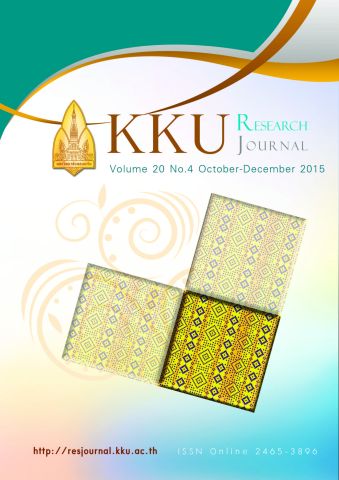Trends of driving demand to inner Bangkok in situation of a congestion charging
Main Article Content
Abstract
Traffic congestion to inner Bangkok needs to be relieved by some kind of a toll charge. The paper investigated whether and to what level the congestion charging will help to solve the congestion problem of inner Bangkok. A travel demand model is estimated and the factors influencing the driving demand for inner Bangkok, where most intensively used mass transit network exists during the years 2012-2014, are reported. The objective is to understand the drivers and investigate the degree of decreased traffic if the congestion charging scheme is implemented and also report other relevant variables. The results show that such the reported acceptable charge has a significant statistically impact on the demand with increasing degree of impact as well as other price-related variable such as fuel costs. Quantity effects such as higher income, more cars in household, more travel time spent to work, and having a parking space at office are used to increase the demand; however, these quantity factors do not have impact on the demand. Conversely, the number of dropping person used to has no impact. Spatial effects, such as the distance from home to office, the distance from office to the metro station, and price effects such as parking fees are not statistically significant. Some personnel factors were not relevant to changes in the number of trips but recently they are reducing factors; these are age, education and urgency of the trip. Factors such as toll charge, income level number of cars in household, travel time to work and parking space are factors increasing the demand. Fuel costs and the occupation officer lower the travel demand.
Article Details
References
[2] Button, K., Ngoe, N., Hine, J., 1993. Modelling vehicle owner ship and use in low income countries. Journal of Transport Economics and Policy 27(1), 51–67.
[3] Camagni, R., Gibelli, M.-C., Rigamonti, P., 2002. Urban mobility and urban form: the social and environmental costs of different patterns of urban expansion. Ecological Economics 40, 199–216.
[4] Dargay, J., Hanly, M., 2002. The demand for local bus services in England. Journal of Transport Economics and Policy 36(1), 73–91.
[5] Gakenheimer, R., 1999. Urban mobility in the developing world. Transportation Research Part A 33, 671–689.
[6] Garcia-Ferrer, A., Bujosa, M., deJuan, A., Poncela, P., 2006. Demand forecast and Elasticity estimation of public transport. Journal of Transport Economics and Policy 40(1), 45–67.
[7] Gärling, T. and Schuitema, G., 2007. Travel Demand Management Targeting Reduced Private Car Use: Effectiveness Public Acceptability and Political Feasibility. Journal of Social Issues, Vol.63, No.10, 139-153.
[8] Goodwin, P., 1992. A review of new demand elasticities with special reference to short and long run effects of price changes. Journal of Transport Economics and Policy 26(2), 155–169.
[10] Handy, S., 1996. Methodologies for exploring the link between urban form and travel behavior. Transportation Research Part D 1(2), 151–165.

